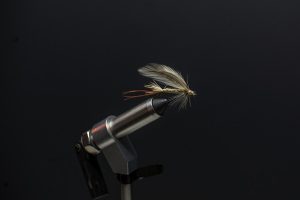 Have you ever tried tying flies? If you haven’t, and you love being outside and fishing, then you should give it a try. In this article we’re going to explore if you can make money tying flies, and just how much you might be able to make – so that you can decide if it is a good fit for you.
Have you ever tried tying flies? If you haven’t, and you love being outside and fishing, then you should give it a try. In this article we’re going to explore if you can make money tying flies, and just how much you might be able to make – so that you can decide if it is a good fit for you.
But first, we’ll go over a few of the basics before getting into the money part of it.
Please note that some of the links below may be affiliate links and we may earn a small commission if you purchase through them.
What is Fly Tying?
Fly tying is the process of creating artificial flies to use as bait while fishing. The flies are usually created to resemble natural insects, baitfish, or other types of prey. Many anglers believe that fly fishing is more challenging and rewarding when using flies that have been tied specifically for the conditions and fish being targeted.
What are the Benefits of Tying Flies?
Tying flies can be a great way to make some extra money. The benefits of tying flies include:
- You can make money from home
- You can be your own boss
- You can set your own hours
- You can work at your own pace
- You can choose the materials you use
- You can make flies to sell or to use for yourself
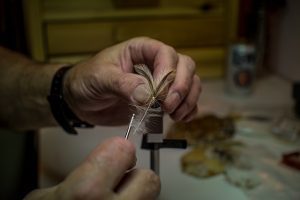 How to Start Tying Flies?
How to Start Tying Flies?
Anyone can learn how to tie flies, and it can be a fun and rewarding hobby. Here are a few tips on how to get started:
- Start with simple patterns: There are literally thousands of different fly patterns out there, but it’s best to start with just a few simple ones. Once you’ve mastered those, you can move on to more complex designs.
- Choose the right materials: Not all fly-tying materials are created equal. Make sure you select high-quality feathers, furs, and hooks that will result in a durable and realistic-looking fly.
- Be patient: Tying flies is not an exact science, so don’t get frustrated if your first few attempts aren’t perfect. With practice, you’ll eventually get the hang of it.
- Be creative: The art of fly-tying can lead to some really amazing creations!
What are the Skills Required to Tie Flies?
In order to tie flies, one must first have the proper tools and materials. Once you have all the necessary tools, you need to know how to use them. Unfortunately there’s no way around it – it will require a lot of time and patience. Take your time while practicing and pay attention to detail and be sure to wrap the thread tightly around the hook so that the fly will stay together when it is cast into the water.
Also, don’t try to do patterns that are too complex when you’re just starting. You need to develop your skills before trying to make more advanced patterns.
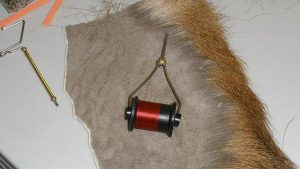 What are the Materials Needed in Tying Flies?
What are the Materials Needed in Tying Flies?
If you’re interested in taking up fly tying, there are a few things you’ll need to get started. Most importantly, you’ll need a vice to hold your hook while you work, and a good set of sharp scissors. You’ll also need some thread, dubbing, feathers, and other materials to tie your flies. You can get a complete kit here, and it’s very inexpensive.
A vice is the first thing you’ll need to purchase. A good quality vice will last you many years and make tying flies much easier. Look for a vice that’s made of metal and can be easily mounted to a table or desk. Record vices are known to be some of the best ones on the market.
Next, you’ll need a set of sharp scissors. You’ll use these scissors to cut the thread, dubbing, and feathers to size. Look for a pair of scissors that are comfortable to hold and have very sharp blades.
Why are There So Many Different Fly Patterns?
Different fly patterns are created for different purposes. The most common purpose for creating a new fly pattern is to imitate a natural food source that fish will find appealing. Some fly patterns are designed to target specific species of fish. Others still are meant to be more versatile, where you can use them for many different types of fish. There are even some flies that are not meant to be eaten by fish at all! These “attractor” flies are usually brightly colored and help draw the attention of nearby fish.
No matter what the purpose of the fly pattern is, they all have one thing in common: they must be tied onto the hook in a way that looks believable and attractive to the fish.
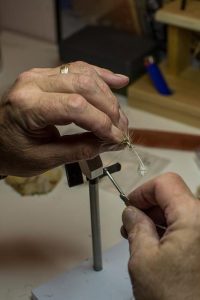 The following are some of the most popular types of fly patterns, each of which can be used to fish for different types of fish.
The following are some of the most popular types of fly patterns, each of which can be used to fish for different types of fish.
Nymphs
Nymph flies are a type of fly that is used to fish for trout. They are often called “nymphs” because they resemble the nymph stage of insects. Nymphs are usually weighted so that they sink in the water and imitate the natural movements of underwater insects.
Nymph flies can be fished using a variety of techniques, but one of the most popular is “nymphing.” This involves fishing with a weighted fly and a light tippet or leader. The weight of the fly helps keep it down in the water column, while the light tippet allows for a more natural presentation. Nymphing can be an effective way to catch trout, but it requires some practice to master.
Streamers
A streamer fly is a type of fishing lure that imitates the appearance of a baitfish or other aquatic prey. The streamer fly is designed to be retrieved through the water in a way that creates movement and vibration, which can trigger a strike from predators. There are many different streamer fly patterns available, and each has its own unique characteristics. Some common streamer fly patterns include the Clouser Minnow, Wooly Bugger, and Muddler Minnow.
Dry Flies
A dry fly is a type of fishing fly that is designed to float on the water’s surface. It imitates the natural appearance of an insect that is sitting on the water’s surface. It is one of the most popular types of fishing flies because it is very effective at catching fish. The dry fly is usually made from a variety of materials, including feathers, fur, and synthetic materials. It can be tied in a variety of different ways, but the most common method is to tie the fly to a hook using thread. It can also be tied using a variety of different techniques, including wet-fly tying, CDC tying, and dubbing.
The dry fly is typically fished using a floating line and a leader. The leader should be long enough so that it does not drag the fly under the water’s surface.
Wet Flies
Wet flies are a type of fly used by anglers to catch fish. It is designed to imitate the appearance of aquatic insects and other small prey that fish feed on. Wet flies are often fished beneath the water’s surface and are typically made from materials that absorb water and sink quickly.
Wet flies can be used to target a variety of fish species, including trout, bass, and panfish. When fishing with wet flies, it is important to match the size and pattern of the fly to the type of fish you are targeting. It can be fished using a variety of techniques, including dead-drifting, swinging, and stripping.
How Much Time Does it Take to Tie a Fly?
It takes anywhere from a few minutes to a few hours to tie a fly, depending on the type of fly and the level of difficulty. The average fly fisherman can tie a simple fly in about 15 minutes.
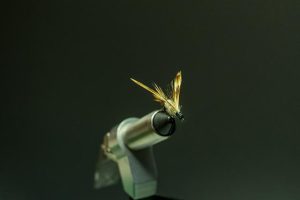 Selling Flies – How Can I Make Money Tying Flies?
Selling Flies – How Can I Make Money Tying Flies?
If you’re an avid fly fisherman, you may be wondering how you can make money tying flies. While it may not be a full-time job, it could be the perfect side-hustle.
Luckily, there are a few ways you can make some extra cash by doing something you love.
One way to make money tying flies is to sell them to local tackle shops. This is a great option if you live near a popular fishing destination. The shop will typically buy your flies at a wholesale price and then sell them to customers at a higher price.
Another way to make money tying flies is to sell them online. There are many websites that allow fishermen to sell their hand-tied flies. This is a great option if you have a large selection of flies or if you specialize in tying a certain type of fly.
Finally, you can also make money by teaching others how to tie flies.
How Do You Market and Sell Your Tying Flies?
In order to market and sell your tying flies, you’ll need to create a strong branding strategy. This includes creating a name and logo for your business, as well as a website and social media presence if you are selling it online. You’ll also need to decide on a pricing strategy, and determine where you’ll sell your flies (online, at fly fishing stores, etc.). Once you have all of this in place, you can start marketing your flies to potential customers.
Fishing for Money – How Much Money Can You Make Tying Flies?
If you’re just starting out, you can expect to make around $5 per fly. As you get better at it and develop your own style, you can charge more for your flies. Experienced fly tiers can make upwards of $20 per fly.
Of course, the amount of money you can make depends on how many flies you’re able to tie. The average tier can tie about one dozen flies in an hour. So, if you’re able to tie two hours’ worth of flies in a day, you could potentially make $240 per day!
What are the Challenges of Making Tying Flies?
The biggest challenge of making tying flies is getting started. Many people are intimidated by the process, but it’s actually quite simple. Once you have the supplies and know the basic techniques, you can start tying flies for fun or profit.
Of course, your skill & ability to create the product will get you started but your ability to make connections and sell your product will ultimately result in your success or failure.
Frequently Asked Questions
What is a fly tying kit?
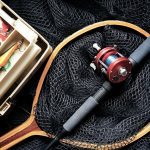
A fly tying kit is a collection of materials and tools used to tie flies for fishing. The most basic fly tying kit will include a vice, scissors, hackle pliers, bodkin, whip finish tool, and thread. More advanced kits may also include dubbing brushes, dubbing wax, Chenille, flashabou, and other materials.
What fishing books can you recommend?
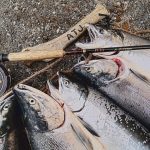
Fishing is a popular hobby enjoyed by many people of all ages. If you are looking to get started in fishing, or are simply looking for new ideas, there are many great fishing books available. Here are a few recommendations: The Complete Book of Freshwater Fishing by Mark Sosin and Bill Dietrich is a comprehensive guide to freshwater fishing. It covers everything from the basics of fish biology and tackles to advanced techniques for catching different types of fish. Fishing Basics by Vic Dunaway is a great book for those just getting started in fishing. It covers all of the essentials, such as choosing the right tackle and bait, and how to cast your line. Fishing from A Small Boat by Ray Opdyke is a must-read for anyone who enjoys fishing from a small boat or kayak.
What are Vice Kits?
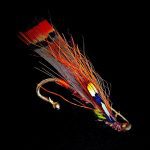
Vice Kits for fishing are designed to help anglers tie their own flies. With a Vice Kit, an angler has everything they need to get started tying flies. The kits usually include a vice, which is used to hold the fly while it is being tied, as well as a variety of other tools such as scissors, bobbin holders, and dubbing brushes. Most Vice Kits also come with an instruction booklet or video that walks the angler through the process of tying a few basic fly patterns. After tying a few flies with a Vice Kit, many anglers find that they enjoy the process and continue to tie their own flies on a regular basis.
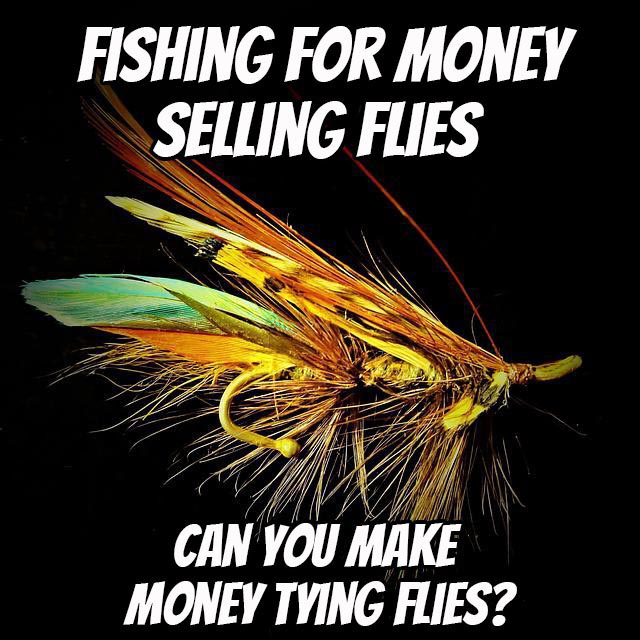
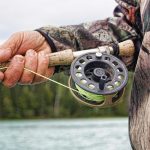
 The VidVoicer Review: Make Professional Quality Video & Voiceovers in a Flash!
The VidVoicer Review: Make Professional Quality Video & Voiceovers in a Flash!  Can I Make Money Selling Firewood? – The Real Cost of Starting a Firewood Business
Can I Make Money Selling Firewood? – The Real Cost of Starting a Firewood Business  New Ways to Make Money with Metal Art: Welding Projects & Business Ideas
New Ways to Make Money with Metal Art: Welding Projects & Business Ideas  Beginner’s Guide: How to Make Money with My Box Truck?
Beginner’s Guide: How to Make Money with My Box Truck?  The Ultimate Guide: How to Make Money Hunting
The Ultimate Guide: How to Make Money Hunting  How to Make Money With a Raspberry Pi – 10 Ways to Earn Passive Income
How to Make Money With a Raspberry Pi – 10 Ways to Earn Passive Income